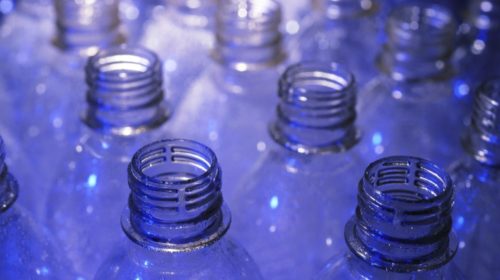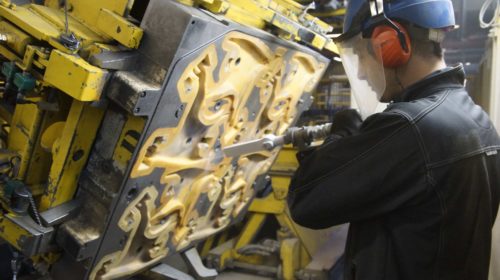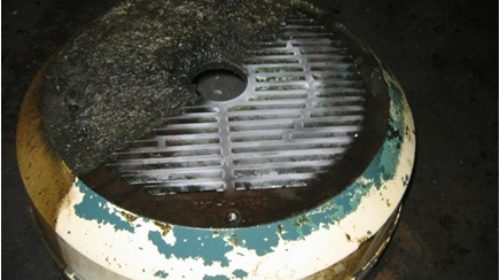
Plastic manufacturer extends mold running time by 200-500%
THE SITUATION
Performance Plastics specializes in high performance injection molding. The company produces small, complex, high quality parts with material attributes that solve their customers’ toughest problems.
For 30 years, they’ve focused on the application of these highly engineered plastics for the performance advantages that they provide when producing intricate part geometries with extremely tight tolerances. They excel at helping companies in the medical device, energy, aerospace/defense, industrial, electronics and food and beverage industries solve current product problems or to create competitive next generation advantages.
“From designs through production, we do what others have dreamed of, failed at or said can’t be done,” said Tom Mendel, president and CEO. “We are defined not by the industry, but by the material we run, the sophisticated tooling we use and the tight tolerances we hold.”
The company has aggressively lowered their per part cost with a proprietary, high volume direct gating hot runner injection molding process that significantly reduces waste and costs. They have molded PEEK since the material was first introduced in the early 1980’s and they have deep experience as an approved processor of Torlon. They have also been involved in development work for liquid crystal polymer (LCP) resins. The company is one of the few able to mold fluorinated ethylene propylene (FEP) using eight-cavity, high volume molds with hot runner systems to produce critical fluoropolymer parts.
They do not mold commodity plastics or bid in auctions. They concentrate on the high-end materials that give customers the properties they need for very specific applications. In other words, the really tough stuff. And they are growing. Almost 30% of the components produced are shipped to international customers providing “Best in Class” value.
“We are pushing the envelope here – running 150 miles per hour in a 20 mph zone,” said Mendel. “We do lots of R&D, lots of engineering and lots of hard stuff.”
THE PROBLEM
As any mold manufacturer knows, keeping the mold clean is a must in the mold making process. But there are two problems. First, the mold is heated (in Performance’s case) to an extreme of 450 degrees Fahrenheit, and the plastic coming into the mold can be up to 800 degrees Fahrenheit. As this happens, gas is generated as a natural byproduct and, as it liquefies, the volatiles generated will stick to the mold. With the extreme materials Performance uses in their molds, this gas sticks tough – Mendel said the contaminants can resemble tar.
Another issue occurs when the plastic is poured from one end of the part and flows around to the end-of-fill. At the end-of-fill the gas must be vented through a very accurate opening in the mold – one that lets the gas out, but does not allow the plastic to escape. This vent at the end-of-fill gets clogged from the buildup of the particulate gases that condense when the mold is cooled. If the tool doesn’t vent properly, problems will occur. The gas can destroy the metal of the mold, or a part may not meet standards for quality.
This is why all molders aim to keep their vents clear in order to maintain a clean mold. As Mendel explains, good molders have a preventative maintenance program where they address the phenomenon of gas buildup in the mold. Properly cleaning the mold is not only required, it is an acquired skill. No one wants to destroy the mold, because they can be a huge expense to replace – in Performance’s case, some molds can cost as much as $250,000.
When a mold is cleaned it usually requires a complete teardown – the assembly is stopped, the mold taken out, disassembled, and every nook and cranny is cleaned. Then it must be put back together. This is very time consuming, and because Performance Plastics is moving at high speeds they don’t like to stop.
Performance’s traditional method of cleaning molds can include any type of grit blasting, or using solvents and wire brushes. The secondary waste from solvents and other media can be a big problem environmentally, in addition to sometimes eating into the metal. These types of cleaning methods can also be time consuming because the metal often needs to be soaked, or a wire brush must be later used to mechanically remove the debris. In any of these cases, they run the risk of damaging the mold.
THE SOLUTION
Mendel will be the first to tell you that mold makers are usually pretty suspicious, skeptical and critical when it comes to trying new things; they have seen many fads and gimmicks come and go. But because someone he trusted recommended trying Cold Jet to clean his equipment, and because Mendel is no stranger to taking risks—after all, it’s brought him success—he put down his guard and brought in the Cold Jet i3 MicroClean® for testing.
Cold Jet’s dry ice cleaning system uses non-abrasive media in the form of recycled CO2 media (pellets or block) that won’t damage surfaces or equipment. The combination of dry ice blast cleaning’s kinetic energy and thermal effects break the connection between the dirt and surface, lifting away contaminants. Unlike blasting with other media, dry ice cleaning does not leave any secondary waste, as the dry ice pellets or particles sublimate – convert from solid to gas – upon impact. Dry ice cleaning is also safe and non-toxic, does not create downstream contamination, and reduces or eliminates employee exposure to dangerous chemical cleaning agents.
THE RESULTS
After Mendel’s team tried the Cold Jet MicroClean machine, everyone was on board with using the system. Since implementing the Cold Jet solution, Performance Plastics has been able to extend the running life of the mold by cleaning it in place in the press—including the vent and ejector pins—extending time between complete teardowns.
“Cleaning with Cold Jet will not roll parting lines, change or destroy the metal,” said Mendel. “And best of all, it allows our running time to be extended. We use it every day, on every shift.”
Mendel said the ability to clean the part in place with the Cold Jet solution really saves time. A complete teardown can vary with the part – sometimes it takes two days or 16 man hours to complete, sometimes it takes less time. When running at extreme temperatures like Performance does, it’s not just the teardown itself that is time-consuming – it takes four hours to heat up the machine and four hours to cool it down. Time is money in this business, and it’s very expensive to shut down. The longer that a complete teardown can be delayed without damaging parts, the better.
“I would say that using the Cold Jet cleaning process extends the running time of our molds by 200-500%,” said Mendel. “It saves us from cooling the mold down, removing it, disassembling it, reassembling it, putting it back in and heating everything up. That is a lot of time and risk for damage. We are very sensitive to the extension of a production run and our startup costs. Once we get something running we don’t want to stop.”
When they do stop they use the Cold Jet solution, whether the mold is hot in the press or taken apart cold on the bench cold.
The second major benefit Performance has experienced is that Cold Jet allows a lot of flexibility when cleaning the mold. They can apply just the right pressure to prevent damage, which is something they cannot always do when using solvents and wire brushes. To illustrate how exact the molds at Performance can be, the shutoffs on certain high pressure materials have to be 0.0004”—because at 0.0005” it will flash, and at 0.0002-0.0003” it can’t be vented and will destroy the metal. These molds are very delicate; 0.0005 equals one-sixth of the diameter of a human hair.
“That’s pretty tight,” said Mendel. “And when you go in with a wire brush and accidentally take a little bit of the metal off, the mold can be destroyed.”
Finally, because a cleaner mold equals a better part, and the molds at Performance can now be cleaned quickly while running, the part is vented more effectively. Scrap rates go down, and quality goes up. And Performance Plastics now needs only one person to clean the mold, versus two, so critical personnel can be directed elsewhere.
“I would tell others to try this out,” said Mendel. “Certainly everyone in this industry is skeptical and you need some skin in the game to take the risk, but the benefits are well worth it.”

